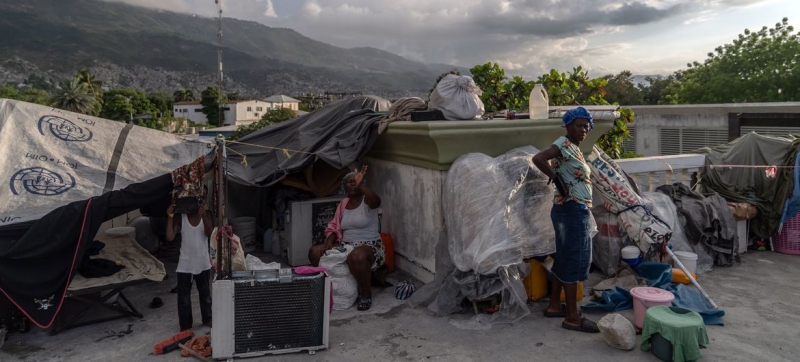
A family displaced by gang violence in Port-au-Prince, Haiti, lives in a tent on the roof of a former government building. 1.1 billion people live in extreme poverty Peace and Security
According to figures released today, 1.1 billion people worldwide live in extreme poverty, and nearly half of them – 455 million people – live in countries affected by conflict or instability. The release marks the International Day for the Eradication of Poverty, which is celebrated on October 17.
Conflicts Worsen Poverty
The United Nations Development Programme (UNDP) and Oxford University analysed statistics for a ten-year period from 112 countries, home to 6.3 billion people, and conducted an additional survey in 20 countries. Based on their work, they prepared an updated report on the global index of so-called “multidimensional” or extreme poverty.
The authors of the publication stressed that data collection in conflict-affected countries is problematic. Because of this, poverty levels may be underestimated, and the real figures may be higher. However, the available data continues to prove the link between poverty and conflict.
For example, in countries at war, on average 34.8 percent of the population lives in poverty, while in countries where there is no conflict, only 10.9 percent of people are considered poor.
“Conflicts have intensified and multiplied in recent years, reaching new highs in casualties, forcing millions of people to flee their homes, ruining their lives and depriving them of their livelihoods,” said UNDP Director-General Achim Steiner.
What is multidimensional poverty
Multidimensional poverty refers not only to a lack of resources, but also to a lack of access to certain services. Multidimensional poverty is measured using 10 dimensions: health (child mortality, nutrition), education (years of schooling, number of children in school), and standard of living (water, sanitation, electricity, cooking fuel, assets, and gender).
Countries at war have the highest scores on all dimensions of multidimensional poverty, highlighting the devastating impact of conflict on the most vulnerable.
For example, in countries affected by conflict, more than 25 percent of poor people lack access to electricity, compared with 5 percent of poor people in more stable regions. Similar differences are observed in areas such as child mortality (8 percent versus 1.1 percent), access to nutrition (20.8 percent versus 7.2 percent), and child education (17.7 percent versus 4.4 percent).
Poverty reduction tends to be slowest in countries that have been most devastated by conflict.
Afghanistan
The report includes an in-depth study of Afghanistan, where the number of poor people increased by 5.3 million during the turbulent period between 2015 and 2023.
The authors of the publication also had access to data to study the post-conflict situation in Afghanistan, and the results of the analysis are alarming. In 2022-23, nearly two-thirds of Afghans were poor.
Children poorer than adults
More than half of the poor are children under 18, according to data released today. Globally, 27.9 percent of children live in poverty compared to 13.5 percent of adults.
828 million poor people lack adequate sanitation, and 886 million people lack adequate housing.
In South Asia, 272 million poor people live in households where at least one person is undernourished, while in sub-Saharan Africa, 256 million live in households where at least one person is undernourished.
Reducing poverty rates
76 countries have reduced poverty for at least one period of time. Only nine countries (Benin, Cambodia, Comoros, the Kingdom of Eswatini, Kenya, Mozambique, the Philippines, Tanzania and Trinidad and Tobago) experienced significant reductions in their levels of “multidimensional” poverty.
